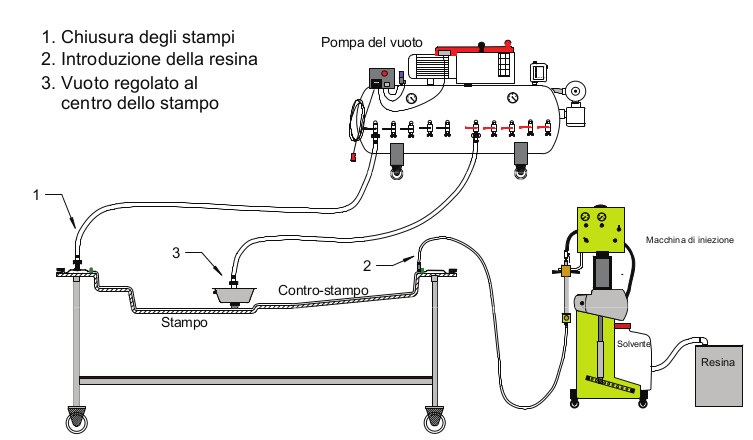Corset’s Industrial Division designs and manufactures components using composite materials for various sectors
Corset’s Industrial Division designs and manufactures components using composite materials for various sectors
Customized services for the design and production of carbon fiber and fiberglass components for applications in the automotive, biomedical, wind energy, as well as earth-moving, agricultural, and construction industries.
RTM Technology
Corset can provide comprehensive support for design, prototyping, and painting of the finished product through in-house expertise and established production processes. The company can develop customer requests and propose the most appropriate solution, following a logic of quantity, quality, and target price.
One of the primary technologies for processing high-performance polymer composites is low-pressure resin injection molding, a system that significantly reduces production procedures and times while enhancing the structural and surface quality of the finished product, making it more competitive than traditional technologies.
The process involves injecting resin and catalyst (mixed) into a closed mold, consisting of two half-shells (matrix and punch), where preformed reinforcement fibers have been loaded beforehand. Once the piece has polymerized, it is extracted and ready for finishing and assembly operations.
Corset employs metal or resin molds based on the requirements for surface and structural quality, budget considerations, and the type of product shape requested by the customer.
R.T.M. LIGHT or VACUUM
This technology uses vacuum-assisted molds, typically with a silicone membrane, for resin infusion. The resin injection is controlled by the vacuum applied inside the mold. This type of process has slightly higher production costs but allows for a higher percentage of reinforcement, for the same laminate thickness, compared to standard RTM (Resin Transfer Molding). With RTM Light, it is also possible to create products with thicknesses, inserts, and materials similar to those used in standard RTM.
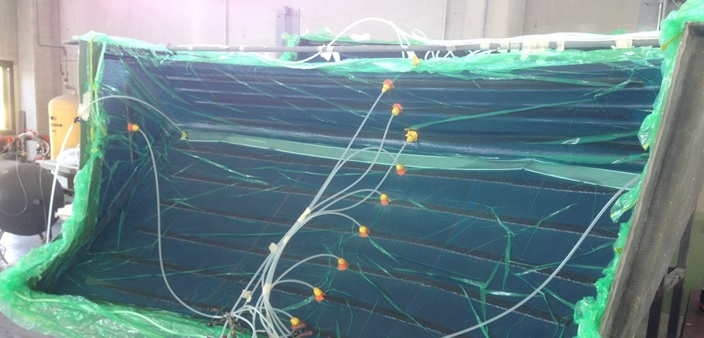
Infusion Technology
Infusion Technology
Infusion is a vacuum-assisted resin injection technology suitable for medium to small production series and large-sized components, ensuring both structural integrity and lightweight properties.
Corset combines the infusion process with polyester or vinyl ester matrix resins to manufacture components in the industrial sector, delivering a blend of high mechanical characteristics, cost-effectiveness, and weight control.
Corset has long embraced the path of infusion and RTM light techniques, both of which offer effective quality control of the product and an enhancement of mechanical properties, all while maintaining an industrial cost structure aligned with market needs.
Integrated Production and Maintenance Control (IPMC)
Il IPMC is a technology that allows for complete visibility into materials and processes related to the entire component manufacturing cycle through the compilation of dedicated checklists managed with the use of RFID devices.
Each component we produce is equipped with an RFID chip that stores all information related to the production process, including the types of materials used and their respective batch numbers. This way, every operation is monitored and can be accessed at any time by simply referencing the chip embedded in the laminate.
The advantage of this technology lies in the fact that as operations on the product are completed, the relevant information is added to the dedicated folder and can be accessed at any time by authorized personnel. This can include photos, videos and more.
At the end of the various manufacturing stages, information related to post-curing heat treatments, Differential Scanning Calorimetry (DSC) analyses, and non-destructive testing will also be included.
Another advantage provided by this technology is that additional information can be inserted at any time, even after the component has been delivered to the assembly site responsible for further processing. This allows for updates to the content as new work is performed during assembly.
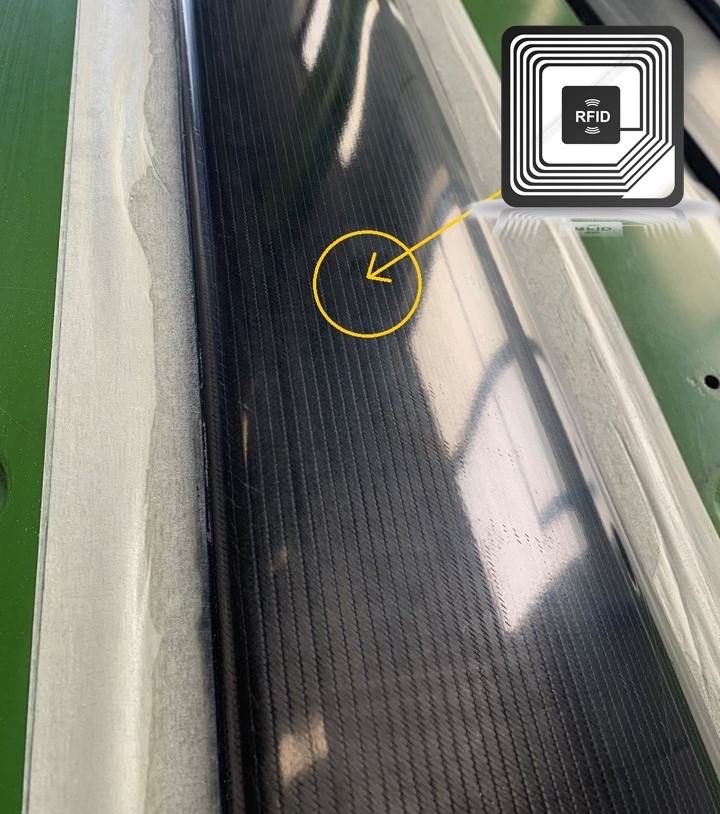
The RFID chip is inserted inside the manufactured item.
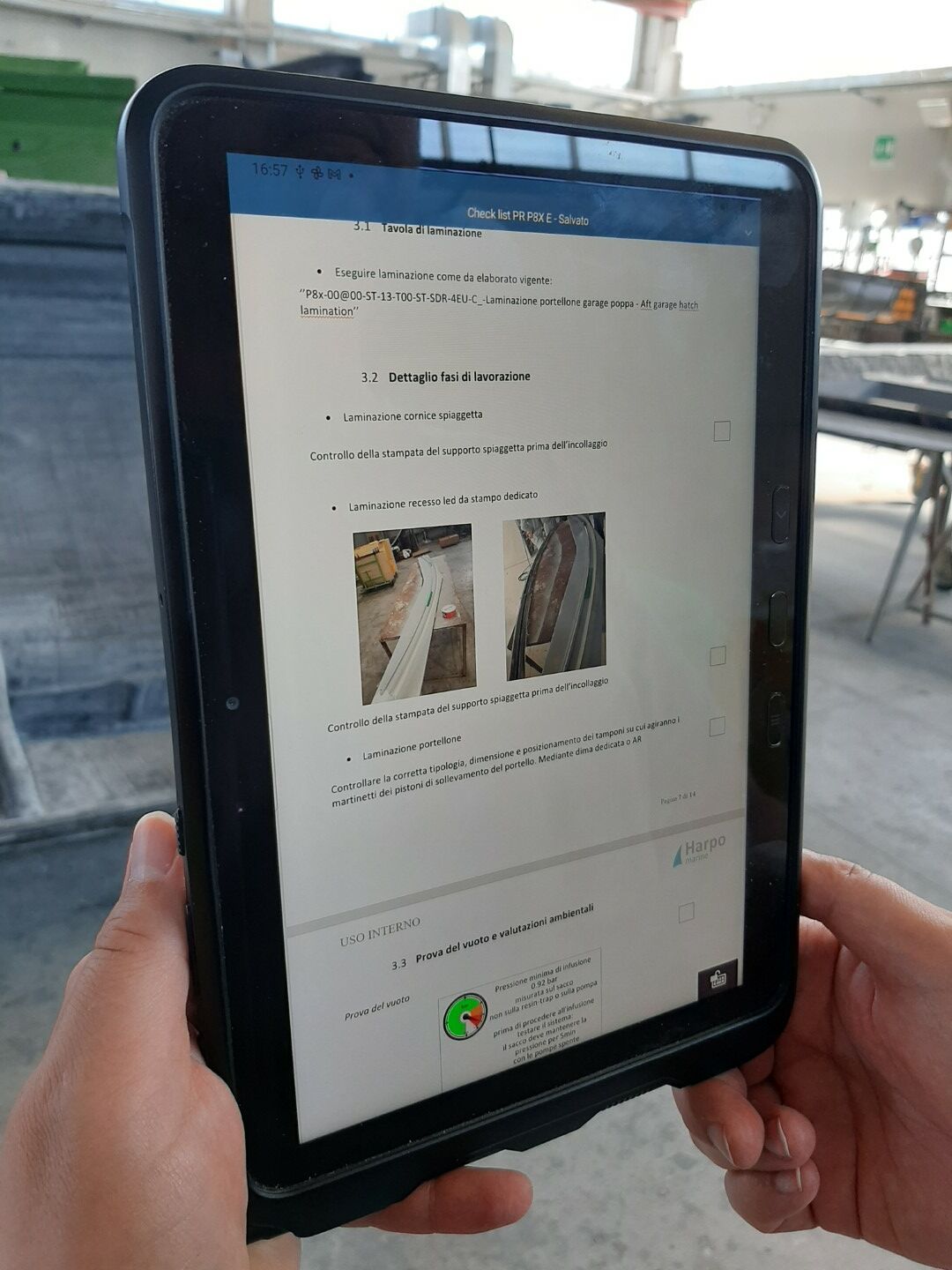
The entire process of creating a component is done through the completion of checklists.
Advantages for the Manufacturer
Material Traceability
Warehouse Flow Control
Operation Traceability
Human Resource Efficiency Control
Outgoing Quality
Advantages for the Assembling Site
Process Visibility
Operation Traceability
Process Control Innovation
More Effective Quality Control
Customer Loyalty
Carbon Skin
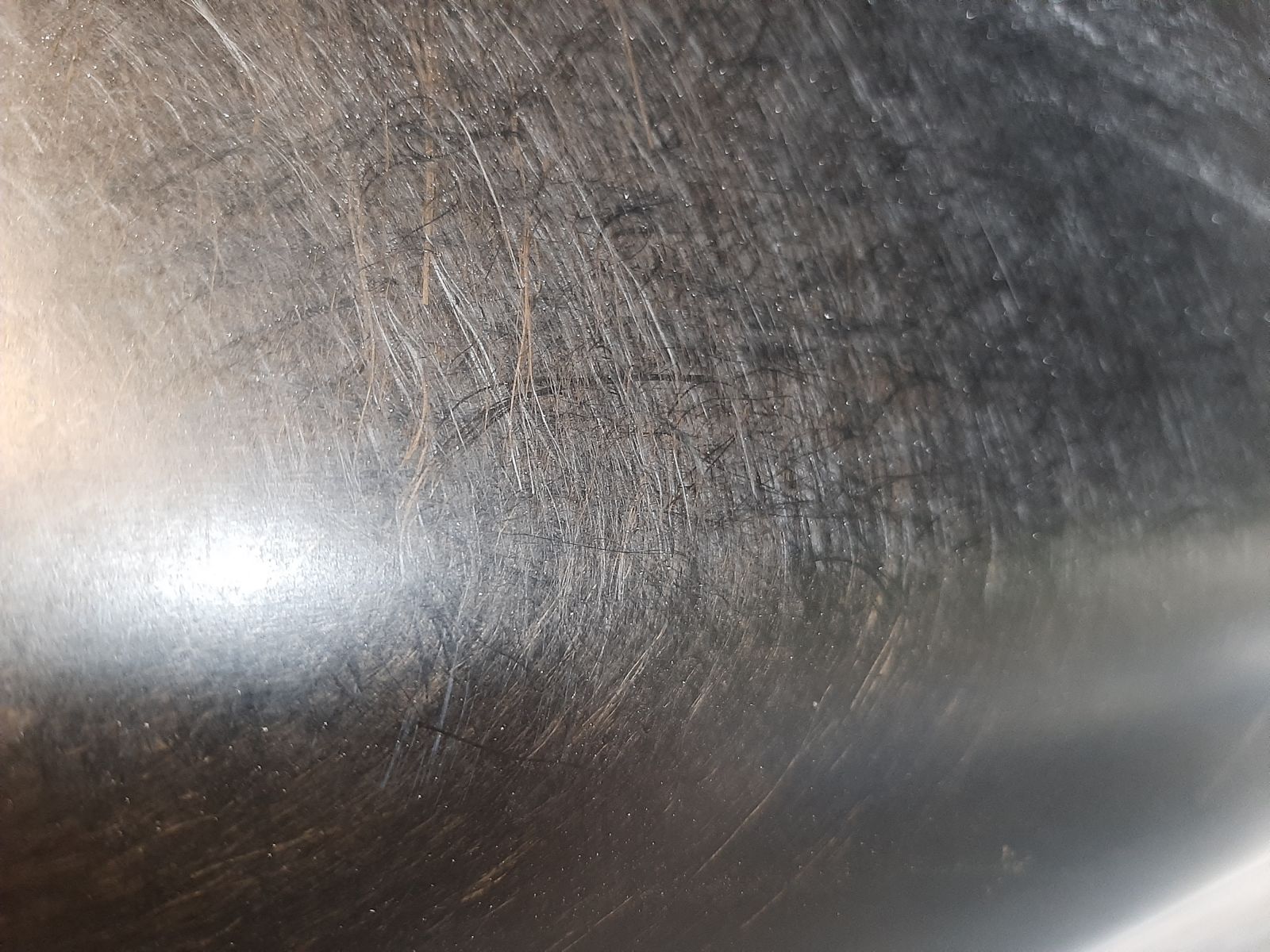
Surface Stability
Improved Precision in the Application of the First Layer of Fabric
Maximum Detection Capability of Potential Surface Defects (not possible in the presence of skin-coat and gelcoat)
Complete Chemical Compatibility and Maximum Adhesion with Subsequent Layers
One of the most common issues in the maritime field is undoubtedly the surface finish of the artifacts. Surfaces must provide particularly effective and long-lasting stability over time to allow the paint to maintain the required standards. Unfortunately, it often happens that composite artifacts tend to maintain a certain degree of movement even after curing and post-curing processes.
These micro-movements can become visible on the surface, significantly altering the paint layer and compromising its aesthetic appearance.
Our experience has led us to develop an innovative system that has allowed for the definitive resolution of these issues.
The goal was achieved by incorporating a first layer of non-Woven carbon fabric, whose anisotropy enabled a homogeneous distribution of surface tensions. In this way, we have achieved unprecedented surface stability, ensuring that the surface remains unchanged over time, even when subjected to the typical thermal gradients of marine use.
